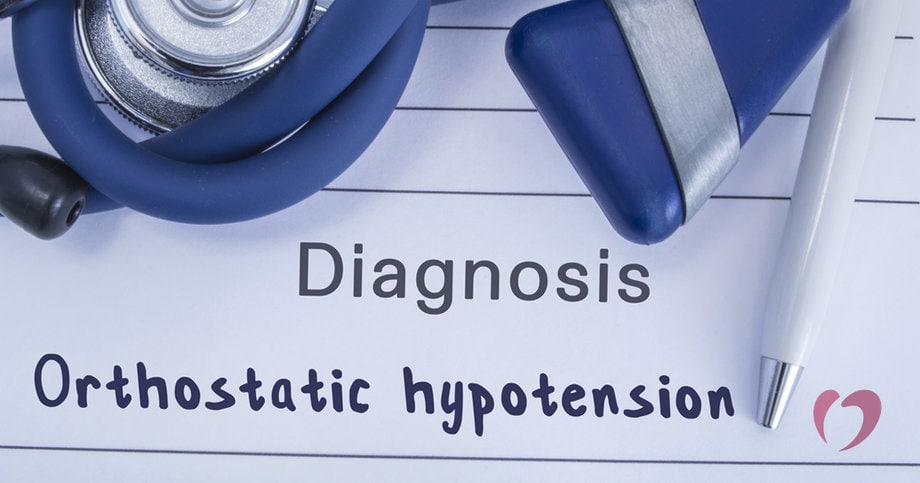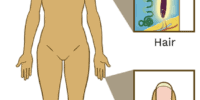What Is Orthostatic Hypotension And How To Prevent It?

Orthostatic hypotension, also known as postural hypotension, is a medical condition characterized by a sudden drop in blood pressure upon standing or changing positions.
This condition can lead to symptoms such as dizziness, lightheadedness, fainting, and even falls, posing a significant risk to individuals’ overall health and well-being.
Understanding the causes and symptoms of orthostatic hypotension is crucial for effective management and prevention.
This article aims to provide a comprehensive overview of orthostatic hypotension, including its underlying causes, available treatment options, and preventive measures.
By adopting lifestyle changes, managing underlying medical conditions, and implementing home remedies, individuals can effectively mitigate the risk of orthostatic hypotension and its associated complications.
Additionally, this article will discuss the importance of seeking medical help when necessary and offer guidance on living with orthostatic hypotension.
Key Takeaways
- Orthostatic hypotension is a condition characterized by a sudden drop in blood pressure when transitioning to an upright position.
- Preventive measures for orthostatic hypotension include the use of orthostatic hypotension alert systems, supportive devices and assistive equipment for mobility and injury prevention, herbal supplements and alternative therapies for managing blood pressure, and acupuncture therapy.
- Fall prevention is crucial for individuals with orthostatic hypotension, and can be achieved through tips for preventing falls and injuries, enhancing home safety, regular exercise for balance improvement, and practicing tai chi and yoga.
- Maintaining a healthy lifestyle through a balanced diet, proper hydration, and avoiding excessive alcohol consumption is important in preventing orthostatic hypotension. Seeking medical help promptly in cases of falls or injuries is also crucial for proper diagnosis and treatment.
Understanding the Causes and Symptoms of Orthostatic Hypotension
The causes and symptoms of orthostatic hypotension can be better understood by examining the physiological responses to changes in body position, such as a sudden drop in blood pressure upon standing accompanied by dizziness and lightheadedness.
Orthostatic hypotension occurs when there is an inadequate compensatory response to maintain blood pressure when transitioning from a sitting or lying position to standing.
This can be caused by underlying medical conditions, medication side effects, or age-related changes in the body. Risk factors for orthostatic hypotension include dehydration, prolonged bed rest, certain medications, and conditions such as diabetes, Parkinson’s disease, and nervous system disorders.
If left untreated, orthostatic hypotension can lead to complications such as falls and injuries, as well as long-term effects like cognitive decline and decreased quality of life. Therefore, it is important to identify the underlying causes and manage them appropriately to prevent these complications and long-term effects.
Lifestyle Changes to Manage Orthostatic Hypotension
To effectively manage orthostatic hypotension, individuals can implement lifestyle changes such as altering daily routines and engaging in regular physical activity. Increasing physical activity can help improve cardiovascular health and enhance blood flow, thereby reducing the risk of orthostatic hypotension episodes. Regular exercise, such as walking or light aerobic activities, can strengthen the muscles involved in maintaining blood pressure and promote overall cardiovascular fitness.
Additionally, dietary changes can also play a role in managing orthostatic hypotension. Consuming a well-balanced diet that includes adequate fluid intake and a moderate amount of sodium can help regulate blood volume and prevent sudden drops in blood pressure. Avoiding excessive alcohol consumption and staying hydrated throughout the day are also important factors in managing orthostatic hypotension.
Medications and Treatments for Orthostatic Hypotension
Medications and treatments for managing orthostatic hypotension involve a range of strategies aimed at regulating blood pressure and improving cardiovascular function. Medication options for orthostatic hypotension include fludrocortisone, midodrine, and pyridostigmine. Fludrocortisone, a synthetic mineralocorticoid, helps increase blood volume by promoting sodium and water reabsorption in the kidneys. Midodrine is an alpha-1 adrenergic agonist that constricts blood vessels, thereby raising blood pressure. Pyridostigmine, an acetylcholinesterase inhibitor, enhances the transmission of nerve impulses, which helps to improve blood pressure regulation.
In addition to medication options, non-pharmacological treatments can also be employed. These include lifestyle modifications such as increasing fluid and salt intake, wearing compression stockings, and avoiding sudden changes in posture. Physical counterpressure maneuvers, such as leg crossing and squatting, can also be used to alleviate symptoms. Furthermore, orthostatic training exercises, such as standing up slowly and performing regular leg exercises, may improve cardiovascular function and reduce the severity of orthostatic hypotension. By combining medication options and non-pharmacological treatments, individuals with orthostatic hypotension can effectively manage their condition and improve their quality of life.
| Medication | Mechanism of Action |
|---|---|
| Fludrocortisone | Promotes sodium and water reabsorption in the kidneys |
| Midodrine | Constricts blood vessels, raising blood pressure |
| Pyridostigmine | Enhances transmission of nerve impulses, improving blood pressure control |
(Note: The table provided above is in markdown format.)
Managing Underlying Medical Conditions
One important aspect of managing underlying medical conditions involves addressing the root causes that contribute to the development of orthostatic hypotension. In addition to medications and treatments, managing diet and exercise can play a crucial role in preventing and managing orthostatic hypotension.
Here are four strategies to consider:
- Increase fluid intake: Staying hydrated can help maintain blood volume and prevent orthostatic hypotension. Aim to drink at least 8 cups of water per day.
- Follow a balanced diet: Consuming a diet rich in fruits, vegetables, whole grains, and lean proteins can help regulate blood pressure and promote overall cardiovascular health.
- Limit sodium intake: Excessive sodium consumption can lead to fluid retention and exacerbate orthostatic hypotension. Aim to reduce sodium intake by avoiding processed foods and using herbs and spices for flavor instead of salt.
- Engage in regular exercise: Physical activity helps improve cardiovascular fitness and can help regulate blood pressure. Aim for at least 150 minutes of moderate-intensity exercise per week, such as brisk walking or cycling.
By incorporating these lifestyle modifications, individuals with orthostatic hypotension can better manage their condition and reduce the frequency and severity of symptoms.
Home Remedies and Natural Supplements
This paragraph introduces a discussion on the subtopic of home remedies and natural supplements for managing underlying medical conditions.
The key points to be discussed include increasing salt and fluid intake, using supportive devices and assistive equipment, and exploring herbal supplements and alternative therapies.
These strategies are commonly used to alleviate symptoms and improve overall well-being, and their effectiveness may vary depending on the individual’s condition and response to treatment.
Increasing Salt and Fluid Intake
To prevent orthostatic hypotension, an effective strategy involves increasing the intake of salt and fluids. This can help to expand blood volume and maintain adequate blood pressure when transitioning from a seated or lying position to standing. Increasing salt intake stimulates the body to retain more fluid, while increasing fluid intake helps to maintain hydration and blood volume. It is important to note that individuals should consult with their healthcare provider before making significant changes to their diet, especially if they have underlying medical conditions such as hypertension or kidney disease. Incorporating regular exercise into one’s routine can also help prevent orthostatic hypotension by improving cardiovascular health and blood pressure control. By following these strategies, individuals can reduce the risk of orthostatic hypotension and its associated symptoms.
| Increase Exercise | Control Blood Pressure |
|---|---|
| Engage in regular physical activity | Monitor blood pressure regularly |
| Include exercises that improve cardiovascular health | Maintain a healthy weight |
| Start with low-impact activities and gradually increase intensity | Limit salt and alcohol intake |
| Consult with a healthcare provider for appropriate exercise recommendations | Take prescribed medications as directed |
| Avoid sudden changes in position during exercise | Practice stress management techniques |
Using Supportive Devices and Assistive Equipment
Using supportive devices and assistive equipment can be beneficial in managing the symptoms of orthostatic hypotension and improving overall stability and mobility.
Assistive devices such as canes, walkers, and crutches can provide additional support while walking, reducing the risk of falls. These devices help redistribute weight and provide stability, allowing individuals with orthostatic hypotension to maintain an upright position without experiencing a sudden drop in blood pressure.
Additionally, adaptive technology such as orthostatic hypotension alert systems can be used to monitor blood pressure levels and notify individuals when their blood pressure drops significantly. These devices can help individuals take immediate action to prevent falls or other complications associated with orthostatic hypotension.
Overall, using supportive devices and assistive equipment can greatly enhance the quality of life for individuals with orthostatic hypotension by improving their mobility and reducing the risk of injury.
Herbal Supplements and Alternative Therapies
To further explore ways to prevent orthostatic hypotension, another approach is the use of herbal supplements and alternative therapies. These methods have gained attention as potential interventions for managing blood pressure and improving cardiovascular health.
Herbal remedies, such as ginseng, ginger, and licorice root, have been suggested to have blood pressure-lowering effects. However, it is important to note that the safety and efficacy of these supplements are still being studied and their use should be approached with caution.
Additionally, acupuncture therapy has also been explored as a potential treatment for orthostatic hypotension. Its mechanism of action is thought to involve the stimulation of specific points on the body to regulate blood pressure.
While further research is needed to establish the effectiveness of these alternative approaches, they offer potential avenues for managing orthostatic hypotension.
- Herbal remedies for managing blood pressure:
- Ginseng
- Ginger
- Licorice root
- Acupuncture therapy as a potential treatment for orthostatic hypotension.
Tips for Preventing Falls and Injuries
One effective strategy for reducing the risk of falls and associated injuries involves implementing practical measures to enhance home safety.
Fall prevention is crucial, especially for individuals at risk of orthostatic hypotension. Along with ensuring a clutter-free environment and good lighting, regular exercise can improve balance and prevent falls.
Specific exercises targeting balance, such as tai chi and yoga, have shown to be beneficial in reducing the risk of falls. These exercises focus on improving strength, flexibility, and coordination, which are essential for maintaining stability.
Additionally, maintaining a healthy lifestyle by incorporating a balanced diet, staying hydrated, and avoiding excessive alcohol consumption can help prevent orthostatic hypotension and reduce the risk of falls.
Implementing these measures can significantly contribute to maintaining safety and minimizing the occurrence of injuries.
When to Seek Medical Help
If experiencing a fall or injury, it is crucial to promptly seek medical attention to ensure proper diagnosis and treatment, ultimately increasing the chances of a successful recovery. When it comes to falls and injuries, knowing when to seek medical help is essential.
While minor injuries can often be managed at home with rest, ice, compression, and elevation, certain situations require immediate medical assistance. Emergency situations that warrant seeking medical help include severe pain, significant swelling or deformity, inability to bear weight on the injured limb, loss of consciousness, severe bleeding, difficulty breathing, chest pain, or any other symptoms that indicate a life-threatening condition.
It is important to remember that timely medical intervention can prevent further complications and provide the necessary support for a speedy recovery.
Living with Orthostatic Hypotension
Living with orthostatic hypotension can be challenging, but there are supportive resources and organizations available to provide assistance and guidance.
These resources can offer valuable information on managing symptoms, accessing medical care, and connecting with others who are also living with the condition.
Additionally, coping strategies and emotional well-being play an important role in managing orthostatic hypotension, and it is crucial to find techniques that work best for each individual.
Lastly, sharing experiences and being part of supportive communities can provide a sense of belonging and understanding, allowing individuals to learn from one another and find comfort in knowing they are not alone in their journey with orthostatic hypotension.
Supportive Resources and Organizations
Supportive resources and organizations related to orthostatic hypotension can be accessed to enhance understanding and management of this condition.
Individuals living with orthostatic hypotension can benefit from supportive counseling services, which provide emotional support and guidance for coping with the challenges associated with this condition. These counseling services can help individuals develop effective strategies for managing symptoms, improving quality of life, and promoting overall well-being.
Additionally, exercise programs specifically designed for individuals with orthostatic hypotension can be valuable resources. These programs are aimed at improving cardiovascular health, increasing muscle strength, and promoting blood flow, which can help mitigate the symptoms of orthostatic hypotension. By engaging in regular exercise, individuals with orthostatic hypotension can potentially improve their tolerance to postural changes and reduce the frequency and severity of symptoms.
Accessing these supportive resources and organizations can empower individuals with orthostatic hypotension to better manage their condition and improve their quality of life.
Coping Strategies and Emotional Well-being
Coping strategies and emotional well-being play crucial roles in the management of orthostatic hypotension. Individuals with this condition often experience challenges related to physical limitations and the potential impact on their daily lives. To enhance their coping abilities and emotional well-being, here are three strategies that can be beneficial:
- Education: Learning about orthostatic hypotension, its causes, symptoms, and treatment options, can empower individuals to better understand and manage their condition.
- Lifestyle modifications: Adopting a healthy lifestyle that includes regular exercise, a balanced diet, and adequate hydration can help improve overall well-being and minimize symptoms of orthostatic hypotension.
- Support networks: Seeking support from family, friends, or support groups can provide emotional support, practical advice, and a sense of belonging, which can positively impact one’s well-being and ability to cope with the challenges of orthostatic hypotension.
By employing these coping strategies and nurturing emotional well-being, individuals with orthostatic hypotension can better manage their condition and maintain a higher quality of life.
Sharing Experiences and Supportive Communities
Transitioning from coping strategies and emotional well-being, individuals experiencing orthostatic hypotension can find solace in sharing their experiences and seeking support from others through various online platforms. Supportive communities and forums provide a virtual space where individuals can connect with others who have similar experiences, creating a sense of belonging and understanding.
These platforms allow individuals to share personal anecdotes, discuss coping mechanisms, and gain valuable insights from others who have successfully managed orthostatic hypotension. Engaging in these communities not only provides emotional support but also offers practical advice and tips for preventing episodes of orthostatic hypotension.
By sharing their experiences and learning from others, individuals can develop a comprehensive understanding of their condition and empower themselves to effectively manage orthostatic hypotension in their daily lives.
Frequently Asked Questions
Can orthostatic hypotension be caused by dehydration?
Orthostatic hypotension, a sudden drop in blood pressure upon standing, can be caused by dehydration. Dehydration reduces blood volume, leading to decreased blood pressure. Maintaining adequate fluid intake can help prevent orthostatic hypotension.
Is there a specific age group that is more prone to developing orthostatic hypotension?
The risk of developing orthostatic hypotension is higher in older adults, especially those above the age of 65. Age-related changes in the cardiovascular system and other underlying health conditions are the main risk factors for this condition.
Are there any alternative therapies or complementary treatments that can help manage orthostatic hypotension?
Alternative therapies and complementary treatments can be used to manage orthostatic hypotension. These may include physical maneuvers, such as leg exercises, compression garments, and increasing fluid and salt intake, as well as medications like midodrine or fludrocortisone.
Can stress or anxiety trigger episodes of orthostatic hypotension?
Stress and anxiety can trigger episodes of orthostatic hypotension. Management techniques for orthostatic hypotension include avoiding sudden postural changes, staying hydrated, and engaging in regular physical activity.
Are there any specific exercises or physical activities that should be avoided for individuals with orthostatic hypotension?
Individuals with orthostatic hypotension should avoid exercises or physical activities that involve sudden changes in position or prolonged standing. These can exacerbate symptoms and increase the risk of fainting. Prevention strategies should focus on maintaining hydration and gradually transitioning between positions.









